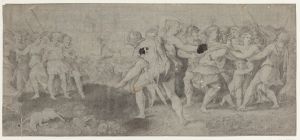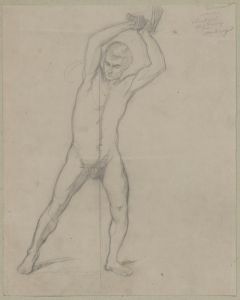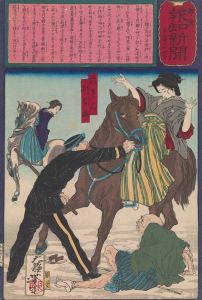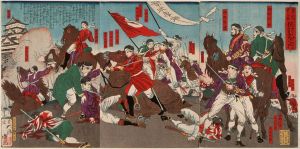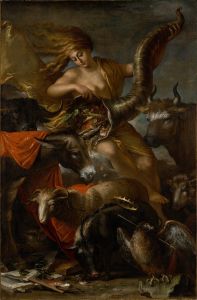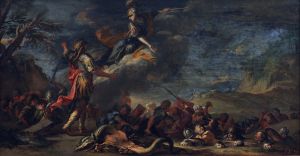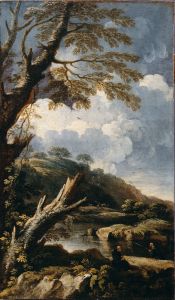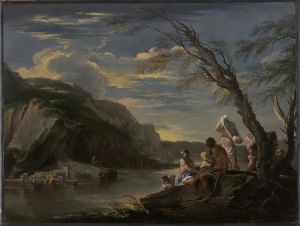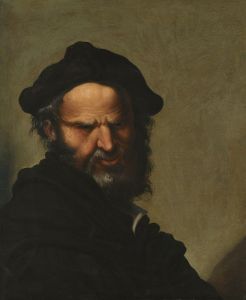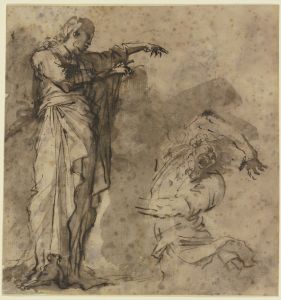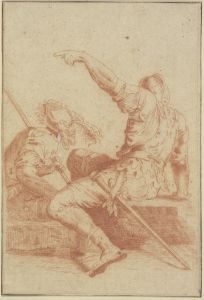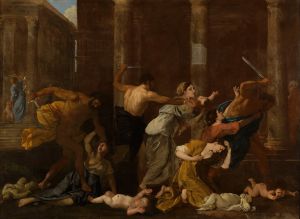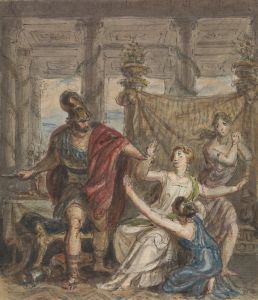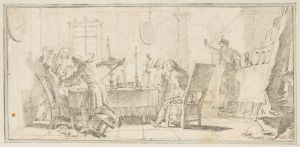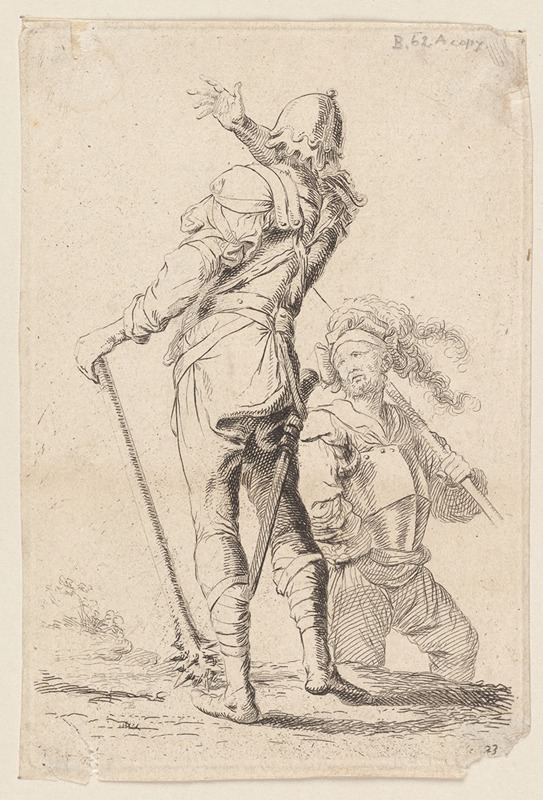
Two Soldiers, One Seen From Behind, Holding a Club
A hand-painted replica of Salvator Rosa’s masterpiece Two Soldiers, One Seen From Behind, Holding a Club, meticulously crafted by professional artists to capture the true essence of the original. Each piece is created with museum-quality canvas and rare mineral pigments, carefully painted by experienced artists with delicate brushstrokes and rich, layered colors to perfectly recreate the texture of the original artwork. Unlike machine-printed reproductions, this hand-painted version brings the painting to life, infused with the artist’s emotions and skill in every stroke. Whether for personal collection or home decoration, it instantly elevates the artistic atmosphere of any space.
Salvator Rosa was an Italian Baroque painter, poet, and printmaker, known for his unorthodox and often rebellious approach to art. Born in 1615 in Arenella, near Naples, Rosa became one of the most original and eclectic artists of the 17th century. His works often depicted dramatic landscapes, historical scenes, and allegorical subjects, infused with a sense of romanticism and a penchant for the dramatic and the sublime.
"Two Soldiers, One Seen From Behind, Holding a Club" is one of Rosa's lesser-known works. As the title suggests, the painting features two soldiers, with one prominently depicted from behind, holding a club. The composition reflects Rosa's interest in the human form and his ability to convey tension and narrative through minimalistic yet powerful imagery. The painting is characteristic of Rosa's style, which often included figures in dynamic poses, capturing a moment of action or contemplation.
Rosa's work was heavily influenced by the tumultuous times in which he lived. The 17th century was a period of great political and social upheaval in Italy, with frequent wars and conflicts. This environment is often reflected in his art, which frequently portrays soldiers, battles, and scenes of conflict. Rosa's soldiers are not merely martial figures; they often embody a deeper psychological complexity, reflecting the artist's interest in the human condition and the darker aspects of human nature.
The painting's composition, with one soldier seen from behind, invites viewers to engage with the scene from a unique perspective. This approach creates a sense of immediacy and involvement, drawing the viewer into the narrative. The use of chiaroscuro, a technique Rosa mastered, enhances the dramatic effect, highlighting the muscular tension of the figures and the rough texture of their surroundings.
Salvator Rosa was also known for his rebellious spirit and disdain for the conventions of his time. He often criticized the academic art establishment and sought to create works that were both intellectually stimulating and visually compelling. His paintings, including "Two Soldiers, One Seen From Behind, Holding a Club," reflect his desire to break away from traditional themes and explore more complex and often darker subjects.
Rosa's influence extended beyond his paintings. He was also a prolific writer and satirist, using his art and poetry to comment on the society and politics of his time. His works were admired by contemporaries and later artists for their boldness and originality.
Today, Salvator Rosa is recognized as a significant figure in the Baroque period, and his works are studied for their innovative approach and emotional depth. "Two Soldiers, One Seen From Behind, Holding a Club" remains an example of his ability to convey narrative and emotion through the depiction of the human form, set against the backdrop of a world in turmoil. While not as widely known as some of his other works, this painting exemplifies Rosa's unique artistic vision and his contribution to the development of Baroque art.





